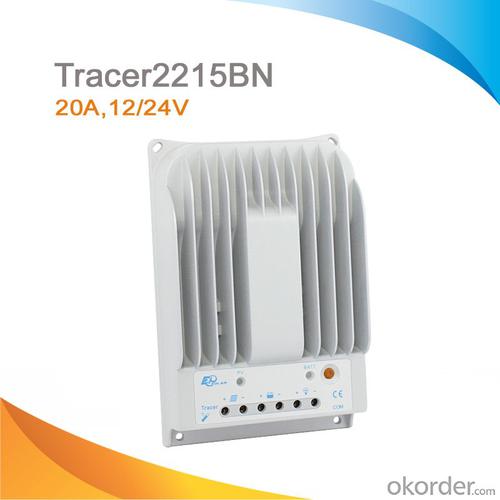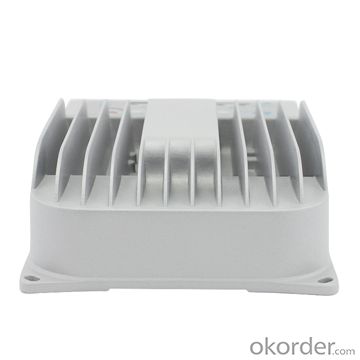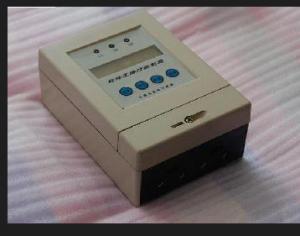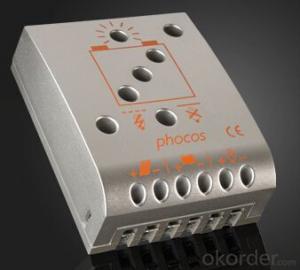20A Solar Controllers MPPT Solar Charge Controller 20A, 12/24V, Tracer2215BN
- Loading Port:
- Tianjin
- Payment Terms:
- TT or LC
- Min Order Qty:
- -
- Supply Capability:
- 10000 pc/month
OKorder Service Pledge
OKorder Financial Service
You Might Also Like
Specifications
10a,20a,30a,40a,12/24v auto work
Die-cast aluminum design
RS485 ports with MODBUS communication
option monitoring software
Features:
·Innovative MPPT technology
·Peak conversion efficiency of 98%
·High tracking efficiency up to 99%
·Several seconds tracking speed
·Die-cast aluminum design and nature cooling
·Temperature compensation
·Diversified load control to meet different requirements
·Four battery type options: Sealed, Gel, Flooded, and USER
·Intelligent lighting and timer control for solar lighting system
·Energy statistics function
·RS485 ports with MODBUS communication protocol
·Optional PC monitoring software and remote meter for real-time monitoring and battery management parameter setting
·Field upgradable firmware
Electronic Protections:
·PV short circuit protection
·PV overvoltage alarm protection
·PV current limiting protection
·PV reverse polarity protection
·Battery overcharge protection
·Battery over discharge protection
·Battery reverse polarity protection
·Load overload protection
·Load short circuit protection
·Overheating protection
Specification:
Model | Tracer1215BN | Tracer2215BN | Tracer3215BN | Tracer4215BN |
Nominal system voltage | 12/24V auto work | |||
Rated battery current | 10A | 20A | 30A | 40A |
Rated load current | 10A | 20A | 20A | 20A |
Max. PV open circuit voltage | 150V | |||
Max. battery voltage | 32V | |||
Max. PV input power | 130W (12V) | 260W (12V) | 390W (12V) | 520W (12V) |
260W (24V) | 520W (24V) | 780W (24V) | 1040W (24V) | |
Equalize charging voltage | Sealed: 14.6V, Flooded: 14.8V, USER: 9~17V | |||
Boost charging voltage | Gel: 14.2V, Sealed: 14.4V, Flooded: 14.6V, USER: 9~17V | |||
Float charging voltage | Gel /Sealed /Flooded: 13.8V, USER: 9~17V | |||
Low voltage reconnect voltage | Gel /Sealed /Flooded: 12.6V, USER: 9~17V | |||
Low voltage disconnect voltage | Gel /Sealed /Flooded: 11.1V, USER: 9~17V | |||
Self-consumption | ≤50mA(12V) ≤27mA(24V) | |||
Grounding | Common negative | |||
Temp. compensation | -3mV/℃/2V | |||
Communication Port | RS485 / RJ45 interface | |||
Working temperature | -35℃~+55℃ | |||
Storage temperature | -35℃~+80℃ | |||
Humidity | ≤95% N.C. | |||
Enclosure | IP30 | |||
Overall dimension | 196x118x36mm | 217x143x56mm | 281x160x60mm | 303x183x64mm |
Terminal | 4mm2 | 10mm2 | 16mm2 | 25mm2 |
Net weight | 0.9kg | 1.5kg | 2.3kg | 2.9kg |

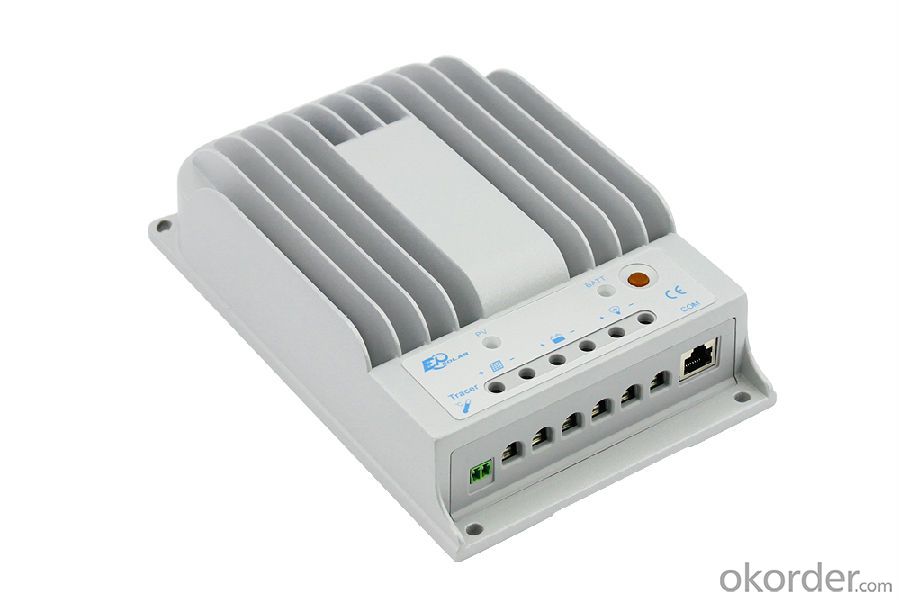

FAQ:
Q1. What is the voltage?
A1. Our 45/60A solar charge controller is 12/24/36/48V auto work.
Q2. What is the difference between MPPT&PWM?
A2. MPPT has higher efficiency, it can track the max power point and won't waste energy.
Q3. What is the efficiency of the MPPT controller?
A3. MPPT>99%, peak conversion efficiency>98%.
Q4. What is the waranty of product?
A4. 12 months.
Q5. What protection does your MPPT controller have?
A5. PV array short circuit, PV reverse polarity, Battery reverse polarity, Over charging, Output short circuit.
- Q: Do solar controllers require any maintenance?
- Yes, solar controllers require regular maintenance. This typically includes cleaning the controller's surface, checking and tightening any loose connections, inspecting the wiring and cables for any damage, and ensuring proper ventilation for efficient operation. Additionally, it is recommended to monitor the controller's performance and battery health regularly to ensure optimal functionality and longevity.
- Q: Can a solar controller be used with a solar-powered educational institution?
- Yes, a solar controller can be used with a solar-powered educational institution. A solar controller regulates and monitors the flow of electricity generated by solar panels, ensuring efficient charging and protection of batteries. It is an essential component for managing and optimizing the solar power system in an educational institution, facilitating reliable and sustainable energy supply.
- Q: Can a solar controller be used with solar panels that are connected to a battery backup system?
- Solar panels connected to a battery backup system can indeed utilize a solar controller. In fact, a solar controller is typically a crucial element of such a system. The primary role of a solar controller is to regulate the voltage and current from the solar panels to prevent battery overcharge. It achieves this by monitoring the battery's state of charge and adjusting the charging parameters accordingly. When solar panels are linked to a battery backup system, the solar controller ensures efficient and effective battery charging. It manages the electricity flow from the solar panels to the batteries, maximizing charging capacity and optimizing battery lifespan. Furthermore, a solar controller can provide other significant functions, including load control, which manages power consumption from the batteries, and system monitoring, which offers real-time information on solar panel and battery performance. In summary, a solar controller is an indispensable component in a solar panel system connected to a battery backup system. It guarantees proper battery charging and management, while enhancing overall system efficiency and performance.
- Q: How do I determine the appropriate size of a solar controller for my system?
- To determine the appropriate size of a solar controller for your system, you need to consider two main factors: the maximum current and voltage of your solar panels. First, calculate the maximum current output of your solar panels by dividing the total wattage by the voltage rating. Next, choose a solar controller that can handle at least the same current rating as your panels. Additionally, ensure that the controller can handle the maximum voltage output of your panels. It is recommended to select a solar controller with a slightly higher current and voltage rating to allow for any potential fluctuations or future expansion of your solar system.
- Q: Are there any compatibility issues with using a solar controller from one manufacturer with solar panels from another manufacturer?
- It is possible to encounter compatibility issues when using a solar controller from one manufacturer with solar panels from another manufacturer. This is because different manufacturers may have varying specifications and protocols for their products. It is generally recommended to use components from the same manufacturer or ensure compatibility by checking product specifications and consulting with professionals in the field.
- Q: Can a solar controller be used with lead-acid batteries?
- Yes, a solar controller can be used with lead-acid batteries. In fact, it is a common practice to use a solar controller to regulate the charging and discharging of lead-acid batteries in solar power systems. The solar controller helps to prevent overcharging and over-discharging, ensuring the longevity and optimal performance of the batteries.
- Q: Can a solar controller be used with solar panel cooling systems?
- Yes, a solar controller can be used with solar panel cooling systems. A solar controller is responsible for regulating the flow of power from the solar panels to the batteries or grid, and it also monitors and protects the batteries from overcharging or discharging. In the case of solar panel cooling systems, the solar controller can be used to power and control the cooling mechanism. This ensures that the solar panels are kept at optimal temperatures, which can improve their efficiency and prolong their lifespan. By using a solar controller, the cooling system can be operated effectively and efficiently, maximizing the output of the solar panels.
- Q: Can a solar controller be used with solar panel carports?
- Yes, a solar controller can be used with solar panel carports. A solar controller is an essential component of a solar power system as it regulates the voltage and current from the solar panels to ensure efficient charging of batteries or powering of electrical loads. In the case of solar panel carports, a solar controller would be necessary to manage the energy production and distribution, maximizing the utilization of solar power and ensuring the longevity of the batteries used to store excess energy.
- Q: The controller has a water setting thawing no other settings inside the regular thawing temperature constant water level
- This can only rely on the sun to pull. Sun drying water is not enough water, you can only install a heating tube pull! Also choose a thick power cord. Thin line not work. Control can not pass your controller, an external air switch on it.
- Q: Are there any safety precautions I should take when installing a solar controller?
- When installing a solar controller, it is important to take several safety precautions into consideration: 1. Prior to commencing the installation, it is crucial to deactivate all power sources connected to the solar controller and disconnect any batteries or power supplies. This step is essential in preventing electrical shocks or accidents during the installation process. 2. Wearing appropriate protective gear, such as safety glasses and gloves, is highly recommended during the installation of a solar controller. This precautionary measure will safeguard you from potential injuries or accidents that may occur. 3. It is imperative to carefully read and adhere to the manufacturer's instructions provided with the solar controller. This will ensure that you follow the recommended installation procedures and specific safety precautions for the particular model being installed. 4. Verifying proper grounding of the solar controller according to the manufacturer's instructions is essential. Adequate grounding helps protect against electrical faults and minimizes the risk of electrical shocks or fires. 5. It is essential to avoid installing the solar controller in areas where there is a chance of water or moisture exposure. Damp or wet locations can pose electrical hazards and damage the equipment. 6. Using the correct wiring and connectors specifically recommended by the manufacturer for the solar controller installation is crucial. This ensures proper electrical connections and reduces the risk of short circuits or other electrical accidents. 7. If you are uncertain about any aspect of the installation process or lack the necessary skills or knowledge, seeking professional assistance is highly recommended. This ensures that the solar controller is installed correctly and safely. By adhering to these safety precautions, you can minimize the risks associated with installing a solar controller and ensure a safe and successful installation process.
Send your message to us
20A Solar Controllers MPPT Solar Charge Controller 20A, 12/24V, Tracer2215BN
- Loading Port:
- Tianjin
- Payment Terms:
- TT or LC
- Min Order Qty:
- -
- Supply Capability:
- 10000 pc/month
OKorder Service Pledge
OKorder Financial Service
Similar products
Hot products
Hot Searches
Related keywords




